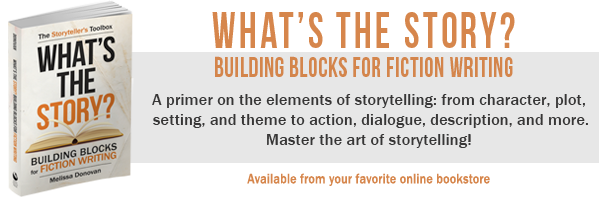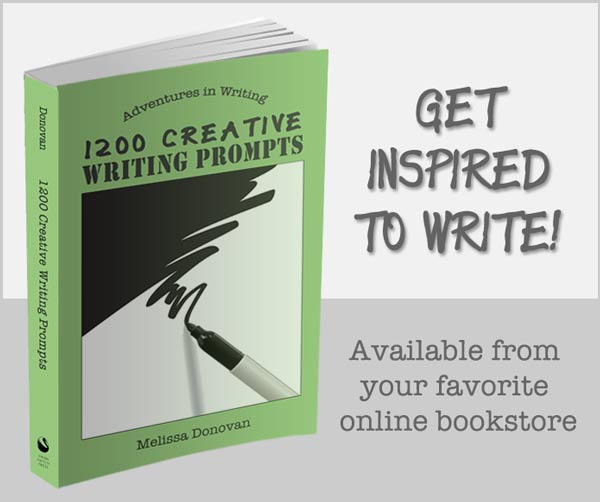Good storytelling includes many elements that a writer must consider. Plot and character are foremost among these elements, and for literary writers, language is high on the list as well.
Some writers start with nothing more than a few key characters and let the plot develop by exploring those characters’ actions. Others practice careful and elaborate plotting and determine every twist and turn a story will take before writing a single word of the first draft.
Whether you write from plot or character, it helps to understand a few basic plot elements.
If you plot by planning and outlining in advance, then these elements will be integral to your story development. If you write from character and let the plotting occur organically, then these are elements that you’ll want to consider as you revise and work through later drafts.
Plot Elements
There are undoubtedly countless plot elements that storytellers can call upon to enhance the plotting process. Today, we’re going to look at a handful of the most basic plot elements that make for good storytelling.
Backstory
There’s more to every story than what we actually read. Each character has a past, and there are usually important events that have taken place prior to the story itself; sometimes the past drives the action in the present. This is backstory, which is best described as what happened before this story took place. While most backstory never makes its way into the narrative, it’s useful for an author to have full understanding of a fictional backstory, as the details of the past will seep into the narrative in subtle ways that make it deeper and more realistic.
The Hook
How much time do you give a story to capture your undivided attention? A chapter? A page? A paragraph? How long will it take you to grab your readers’ attention? The hook is what gets people interested in a story. It’s placed near the beginning of a story to entice readers to keep turning pages. Hooks often present mysteries or interesting questions — the readers’ natural curiosity makes them want to see mysteries resolved and questions answered. In addition to the beginning of a story, hooks can be placed elsewhere to keep readers engaged. Good spots for hooks include the beginning of each of the three acts or when a major plot thread gets resolved.
The Inciting Incident
The inciting incident is the event that kicks off the story. Most stories open by showing us the protagonist in their “ordinary world.” Then something changes, something that shakes things up and forces the protagonist onto some other path. Inciting incidents can be intertwined with a story’s opening hook or the turning point at the end of act one, but they can also stand alone, usually somewhere in the first act.
Conflict
Some plot elements are optional. Conflict is not. Without conflict, there is no story. Characters want something they don’t have; they are looking for ways to change their current reality; or they must overcome challenges that have been forced upon them, however great or small. Try to write a story without conflict and you’ll end up with a character sketch or a concept statement. Conflict can come from many sources. The characters themselves often provide a lot of conflict: one character against the world, two characters at odds with each other, a team of characters on a difficult mission, or a character struggling with their own internal flaws and weaknesses. Nature is a common source of conflict, as is society. And of course, an enemy is always rife with conflict.
Climax
Like conflict, climax is an essential part of storytelling. The climax normally occurs right before the denouement, or final resolution of the plot’s main conflict, during the third act. This is the moment when a story reaches its peak, when readers hold their breaths and can’t stop turning the pages because they want to see how it all turns out.
Subplots
Subplots are often the goings-on in the background of the main story, but they can also occur within the central story line. Subplots can provide respite from the main plot, and they often make it more interesting by giving the reader more to think about. Some subplots occur in a single sequence of scenes that breaks from the central plot; others are threaded throughout the central plot. Subplots are most effective when they are integral to the main story line.
Plotting Fiction
I’ve come to believe that one of the reasons so many writers let their characters drive the plot is because plotting is rather difficult. Some people believe there are a limited number of plots available; it’s challenging to come up with plots that feel fresh or original. Often originality comes not from plotting but from creating unique and distinct characters and combining various other story elements in fresh ways.
Each of us much approach fiction writing using whatever method works best -– plotting in advance or diving in with just a character or two. Regardless of the writing process that we use individually, we should all be aware of the various elements of plotting that make a story interesting and engaging.
Do you have any plotting tips to share? Any challenges that you’re facing with plotting a story? Share your thoughts and ideas by leaving a comment.






The characters have to draw me in. They have to make me smile in some way. Even the bad ones need to give me a chuckle.
Plot is the foundation that they walk on. It’s a one way street with no directions.
When I find a combination that fits those qualities that is when I sit down and write.
Well said, Bryan!